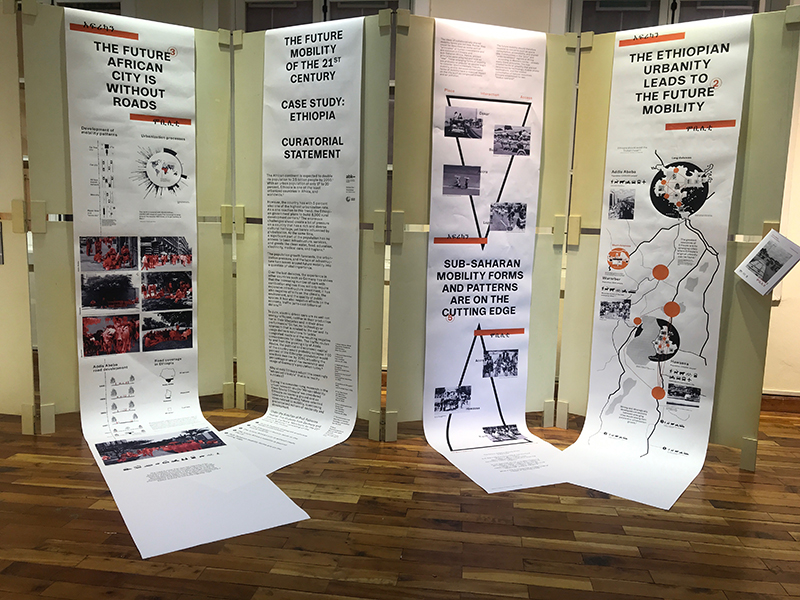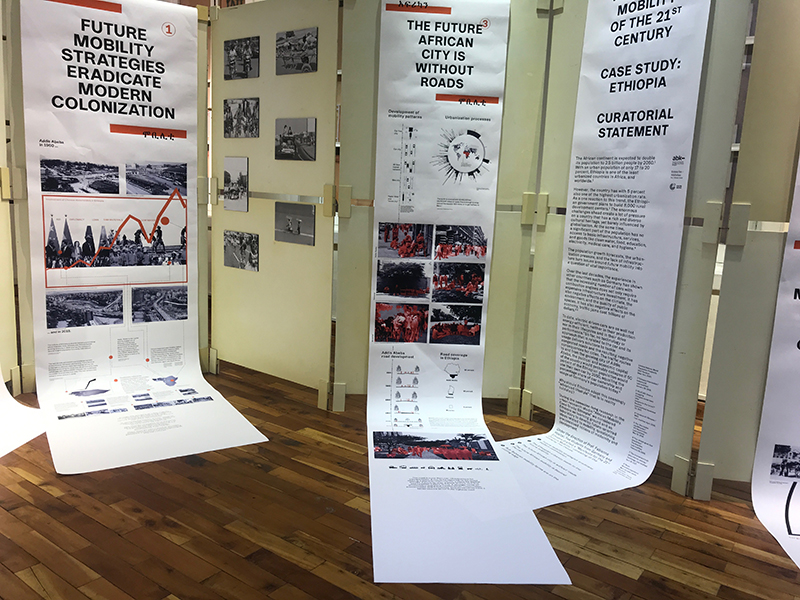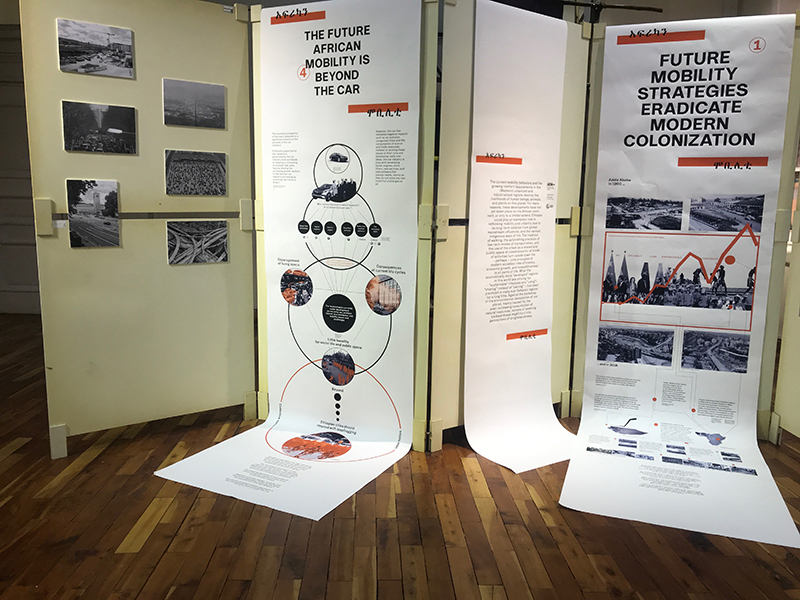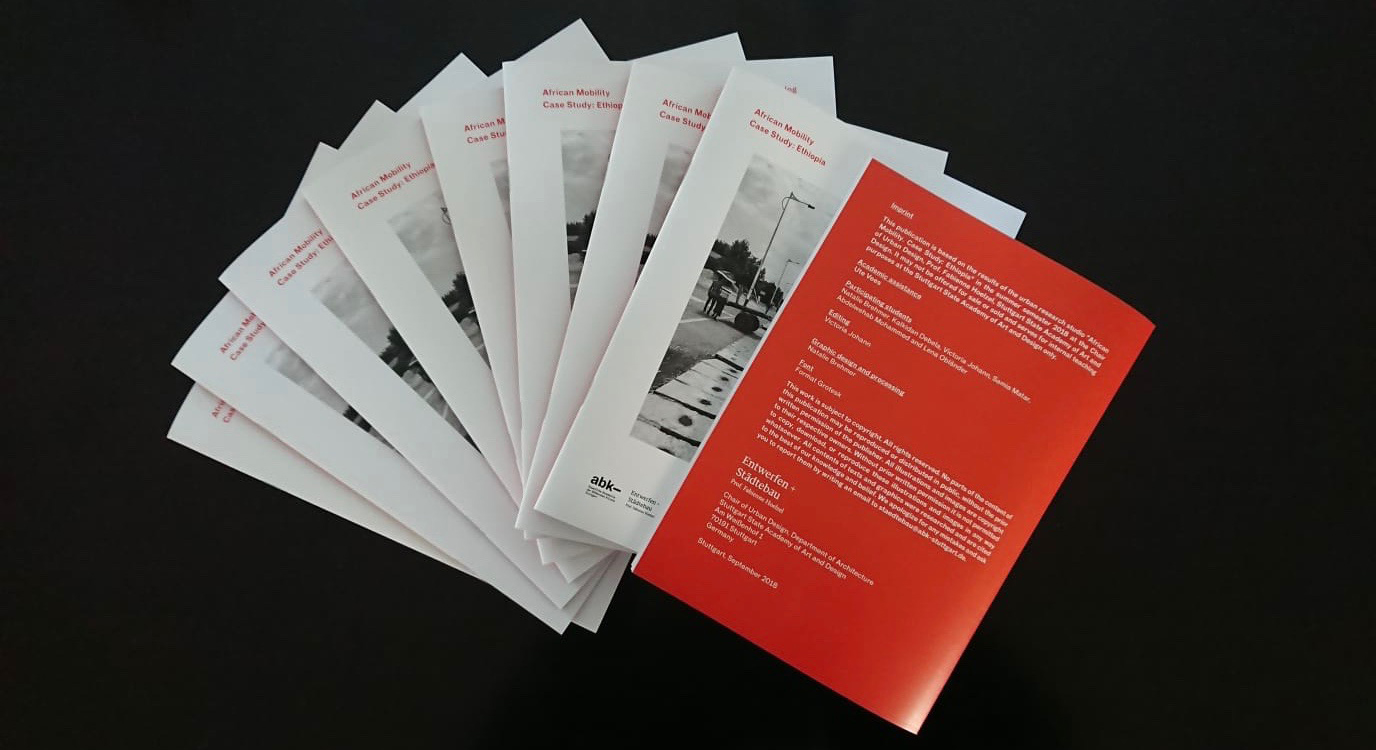African
Mobility
Cooperation with EiABC Addis Ababa (AA)
Cooperation with Emerging Cities Lab (ECL)
Ute Vees
ute.vees@abk-stuttgart.de
English
The African continent is expected to double its population to 2.5 billion people by 2050.1 With an urban population of only 17 to 20 percent, Ethiopia is one of the least urbanized countries in Africa, and worldwide. However, the country has with 5 percent also one of the highest urbanization rate. As a one reaction to this trend, the Ethiopian government plans to build 8,000 rural development centers. The enormous challenges ahead create a lot of pressure on a country that has a rich and diverse cultural heritage, yet barely influenced by globalization. At the same time, a significant part of the population but has no access to basic infrastructure, services, and goods like clean water, food, education, electricity, medical care, and hygiene. The population growth forecasts, the urbanization pressure, and the lack of infrastructure turn issues around future mobility into a question of vital importance. Over the last decades, the experience in other countries such as Germany has shown that the increasing number of cars with combustion engines does not only require expensive infrastructure investment, it has also negative effects on the climate, the environment, and the quality of public spaces. It has also negative effects on the economy, traffic jams cost billions of dollars. To date, electric driven cars are as well not energy-efficient, neither in their production nor in their lifecycles and in their drive performance. So far, no technology or approach that is related to the car and its usage delivers solutions to tackle congested roads and the resulting negative consequences for cities. The traffic routes to and from the growing city of Addis Abeba, the political and economic capital of the country would probably collapse if 50 percent of the Ethiopian population would use their own car by 2050, equaling the percentage share of car ownership and usage of Germany‘s population today. Why should Ethiopia adapt this seemingly “advanced lifestyle” that is in reality outdated? During the semester-long research in the urban research studio “African Mobility. Case Study: Ethiopia” we considered Ethiopia as learning ground and as laboratory to develop future-oriented ideas related to mobility, questioning preconceived notions of modernity and development.
Under the direction of Prof. Fabienne Hoelzel, six students from Germany and Ethiopia drafted a »Manifesto for the 21st Century Mobility«, consisting of the following five theses:
1. Future mobility strategies eradicate modern colonization
2. The Ethiopian urbanity leads to the future mobility
3. The future African city is without roads
4. The future African mobility is beyond the car
5. Sub-Saharan mobility forms are on the cutting edge
The results of the Urban Research Studio were on display at the Goethe Institute Addis Abeba, launched with a lively and well-visited panel discussion. The exhibition catalog "African Mobility. Case Study. Ethiopia" summarizes the key findings.



